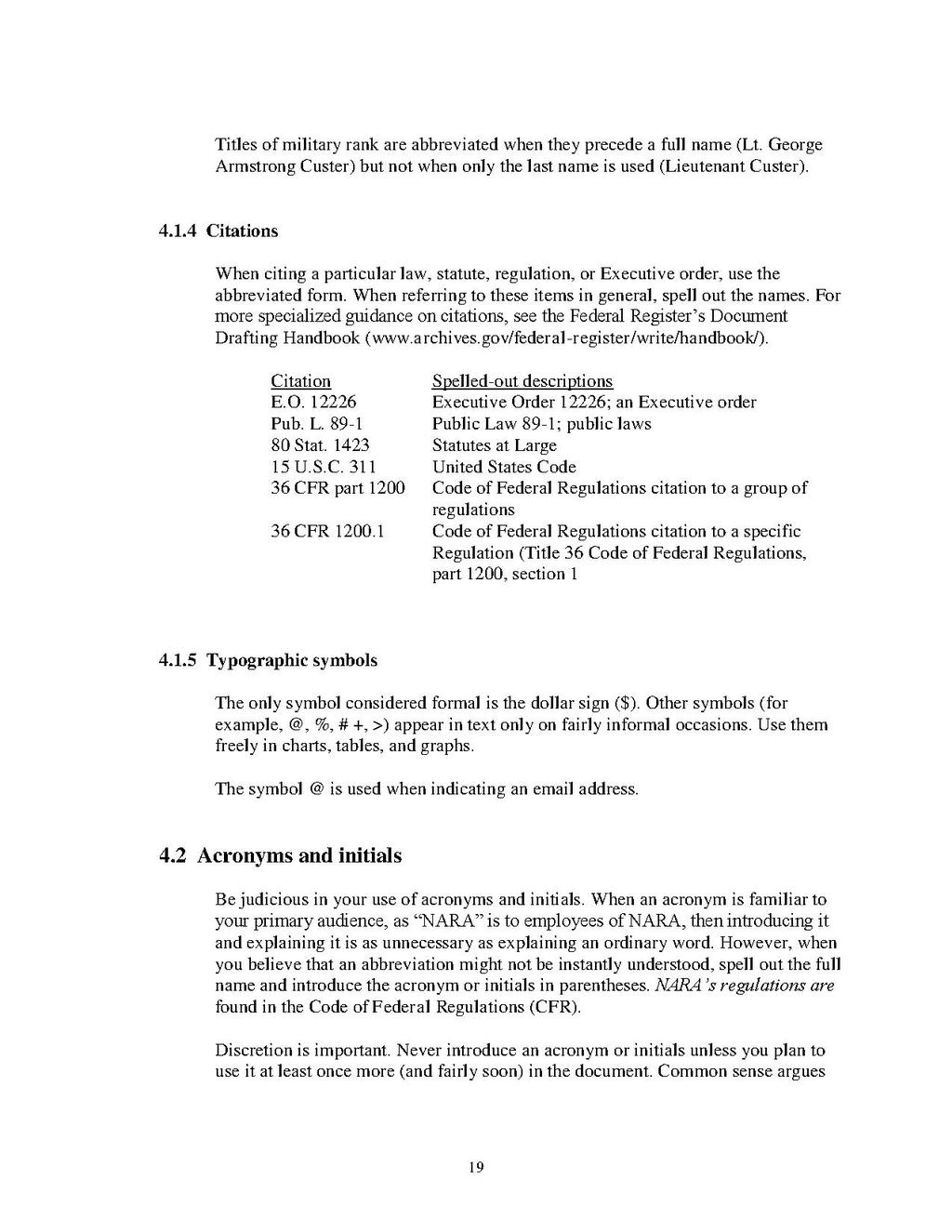This page has been validated.
- Titles of military rank are abbreviated when they precede a full name (Lt. George Armstrong Custer) but not when only the last name is used (Lieutenant Custer).
- 4.1.4 Citations
- When citing a particular law, statute, regulation, or Executive order, use the abbreviated form. When referring to these items in general, spell out the names. For more specialized guidance on citations, see the Federal Register's Document Drafting Handbook (www.archives.gov/federal-register/write/handbook/).
|
Spelled-out description |
|---|---|
|
Executive Order 12226; an Executive order |
|
Public Law 89-1; public laws |
|
Statutes at Large |
|
United States Code |
|
Code of Federal Regulations citation to a group of regulations |
|
Code of Federal Regulations citation to a specific Regulation (Title 36 Code of Federal Regulations, part 1200, section 1 |
- 4.1.5 Typographic symbols
- The only symbol considered formal is the dollar sign ($). Other symbols (for example, @, %, # +, >) appear in text only on fairly informal occasions. Use them freely in charts, tables, and graphs.
- The symbol @ is used when indicating an email address.
- 4.2 Acronyms and initials
- Be judicious in your use of acronyms and initials. When an acronym is familiar to your primary audience, as NARA is to employees of NARA, then introducing it and explaining it is as unnecessary as explaining an ordinary word. However, when you believe that an abbreviation might not be instantly understood, spell out the full name and introduce the acronym or initials in parentheses. NARA's regulations are found in the Code of Federal Regulations (CFR).
- Discretion is important. Never introduce an acronym or initials unless you plan to use it at least once more (and fairly soon) in the document. Common sense argues
19
